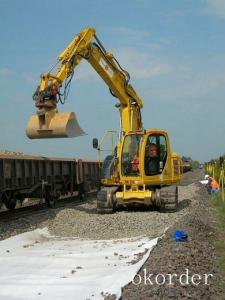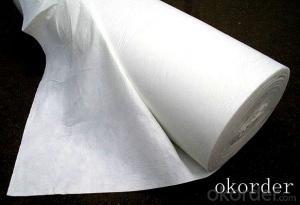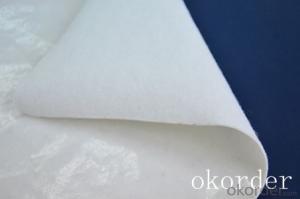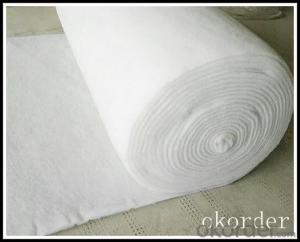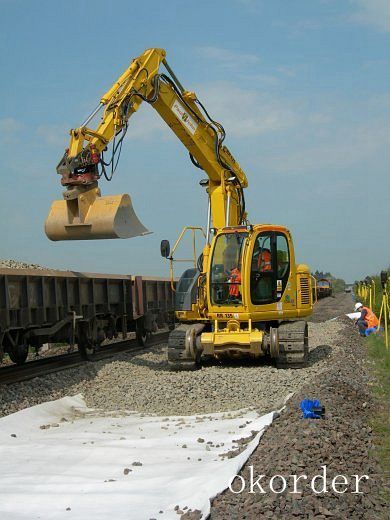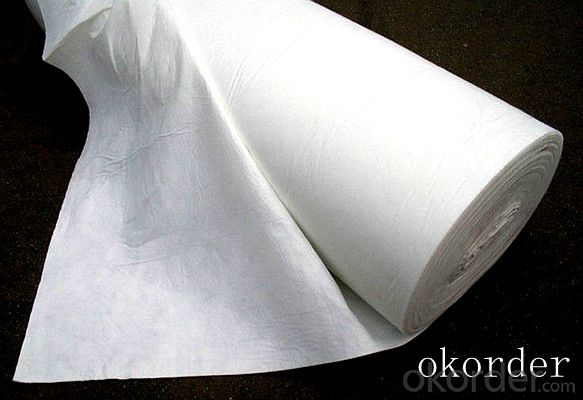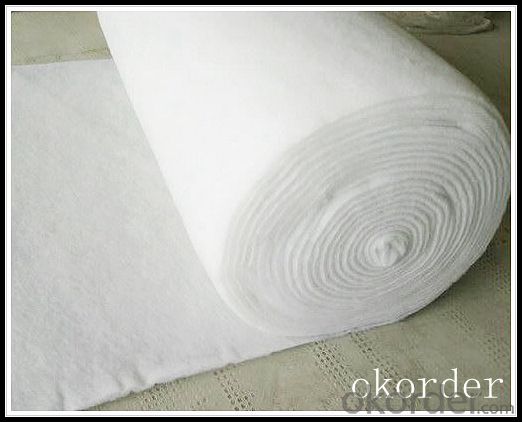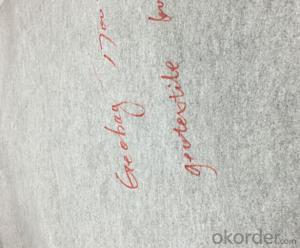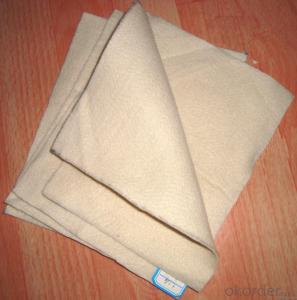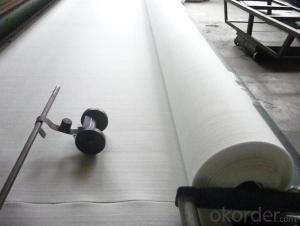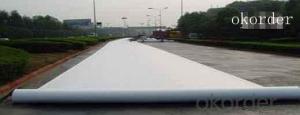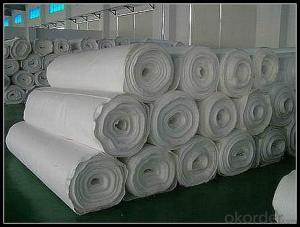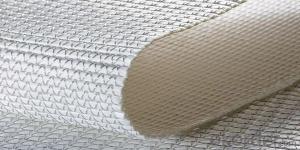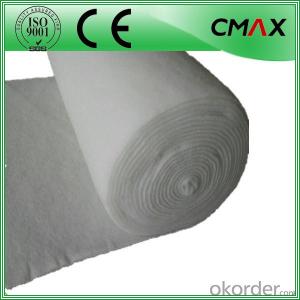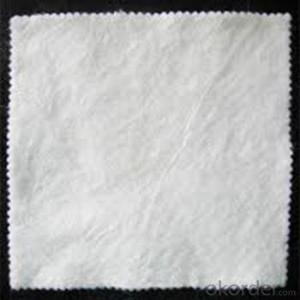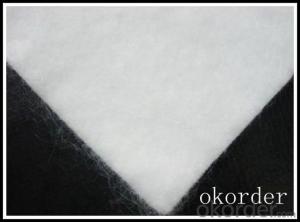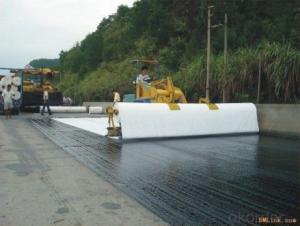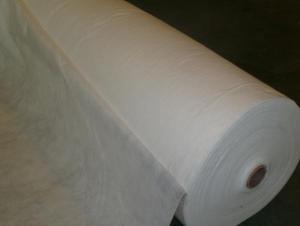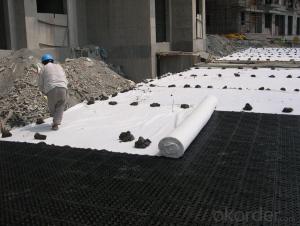Copper Geotextile Civil Non-Woven Geotextiles Industrial Nonwoven Fabric for Railway
- Loading Port:
- China main port
- Payment Terms:
- TT OR LC
- Min Order Qty:
- 1000 m²
- Supply Capability:
- 1000000 m²/month
OKorder Service Pledge
OKorder Financial Service
You Might Also Like
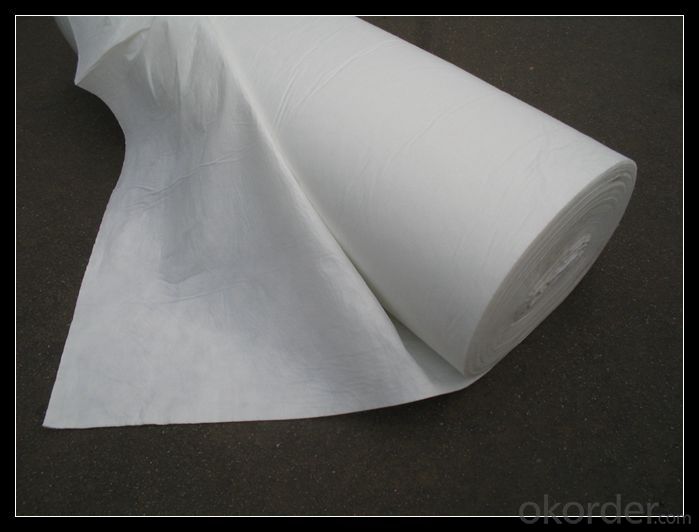
Non Woven Geotextile Introduction:
Nonwoven geotextiles are manufactured from the extrusion of polypropylene fibres which are then laid down on a manufacturing "bed" and then needle punched to entangle the fibres such that a dimensionally stable product is formed. Some additional thermal treatment is then applied to further improve the strength of the geotextile. Because of this manufacturing process non-woven geotextiles are generally best used in applications of drainage, filtration and protection
Assembling is possible at almost any weather conditions. There are no big difficulties while the laying out of the material due to the following features: material rolls are not big, which reduces transportation and storage costs as well as labor costs; the material does not water permeable; while application in humid conditions the roll weight does not change; it is not permeable for plant roots, is a good protection from gnawing animals; acid and alkali resistant, etc. the material exactly repeats the base molding and does not require any fixing and fastening joints.
Our Service
1.On a regular basis or as per your request,we entrust national testing agencies to conduct quality inspections
2. Strictly in accordance with the ISO9001-2008 international quality system standard,we monitor and manage the whole process throughout production,quality testing,and measurement to ensure product quality
3. For quality-related construction delay or substandard construction(except for damage or losses due to customer’s responsibility or irresistible natural disasters),we have refunding,replacement,and repair services.We will respond to customers’ feedbacks on quality issues within 24 hours.
After-sales service
1.In order to provide customers with comprehensive technical support,we will provide technical and other related information upon request in a timely manner.
2.In required,we will appoint specialized technicians to the construction site to give technical trainings to construction people,and offer technical guidance throughout the whole construction process.
3.For damage due to shipment and delivery,after we receive the complaint,we will check the issure through provided pictures and videos.If our responsibility is confirmed,we wil offer free replacement.
4.When the construction is completed,as your request,our technical staff may participate in the final acceptance.
FAQ:
Q: What kind of payments does jenor support?
A: T/T, L/C, Cash are accepted.
Q: Do you charge for the samples?
A: Accordeing to our company policy, the samples are free, we only charge the freight fee. And we will return the freight fee during the next order.
Q: Can you produce according to customers' design?
A: Sure, we are professional manufacturer, OEM and ODM are both welcome.
Q: Do you have other products?
A: Yes, please check the pictures:
- Q: How do geotextiles help with bridge abutment protection?
- Geotextiles help with bridge abutment protection by providing a stable and erosion-resistant layer between the soil and the abutment. They prevent soil movement, control water flow, and enhance the abutment's overall stability, reducing the risk of erosion and structural damage.
- Q: What are the considerations for geotextile selection in mining operations?
- When selecting geotextiles for mining operations, several considerations need to be taken into account. Firstly, the geotextile should be able to withstand the specific conditions of the mining site, such as high pressure, abrasion, and chemical exposure. It should also have sufficient strength and durability to support the load and prevent soil erosion. Additionally, the geotextile's permeability should be assessed to ensure proper drainage and filtration of water or other liquids. Lastly, its installation and maintenance requirements, as well as cost-effectiveness, should be considered to ensure seamless integration into the mining operation.
- Q: Seepage geotextile and impervious geomembrane
- Seepage geotextile is a short wire geotextile, the main thing is to filter water leakage. Impermeable geomembrane is used to waterproof, so the difference between the two is great.
- Q: Where is the non-woven geotextile in the tunnel?
- The nonwoven geotextile is used to isolate the dome between the concrete and the waterproof layer in the tunnel.
- Q: Filament, preferably concrete construction
- Tianhai new material filament geotextile case analysis of water conservancy projects: seawall, river embankment, lake embankment project; reservoir reinforcement project; reclamation project; flood control and rescue. Highway and railway engineering: soft foundation reinforcement treatment; slope protection; road anti-reflective crack structure layer; drainage system; green isolation zone. Electrical engineering: nuclear power plant basic engineering; thermal ash dam project; hydropower project.
- Q: Are geotextiles resistant to hydraulic shear stress?
- Yes, geotextiles are generally resistant to hydraulic shear stress. They are designed to provide stability and prevent erosion in soil and other hydraulic environments.
- Q: What is the latest price of geotextile?
- Ask the geotextile price is too general, because the standard too much. Short wire, filament, polyester; non-standard, GB and so on. Ton price is generally between 4900-7500 yuan / ton, but the weight <200g, an increase of 100 yuan / ton; weight> 800g, an increase of 500 yuan / ton.
- Q: What are the different geotextile installation techniques in filtration?
- Some of the different geotextile installation techniques in filtration include direct placement, wrap and trench, and sand bag placement. Direct placement involves placing the geotextile directly on the soil surface, while wrap and trench involves wrapping the geotextile around a soil layer or pipe and placing it in a trench. Sand bag placement involves constructing sand bags filled with soil and placing them against the geotextile to hold it in place. These techniques help to ensure proper filtration and prevent soil erosion.
- Q: Engineering geotextile non-woven fabrics where the cheapest can buy, where the wholesale market?
- Hello, I am a geotextile manufacturer, quality assurance geotextile, cost-effective, logistics benefits.
- Q: How are geotextiles tested for strength and durability?
- Geotextiles are tested for strength and durability through various methods such as tensile strength tests, puncture resistance tests, tear strength tests, and abrasion resistance tests. These tests involve subjecting the geotextile to controlled forces and conditions to determine its ability to withstand different types of stresses and strains. Additionally, long-term exposure tests are conducted to assess the geotextile's durability under simulated environmental conditions, ensuring its performance over time.
Send your message to us
Copper Geotextile Civil Non-Woven Geotextiles Industrial Nonwoven Fabric for Railway
- Loading Port:
- China main port
- Payment Terms:
- TT OR LC
- Min Order Qty:
- 1000 m²
- Supply Capability:
- 1000000 m²/month
OKorder Service Pledge
OKorder Financial Service
Similar products
Hot products
Hot Searches
Related keywords
